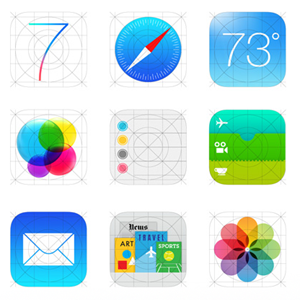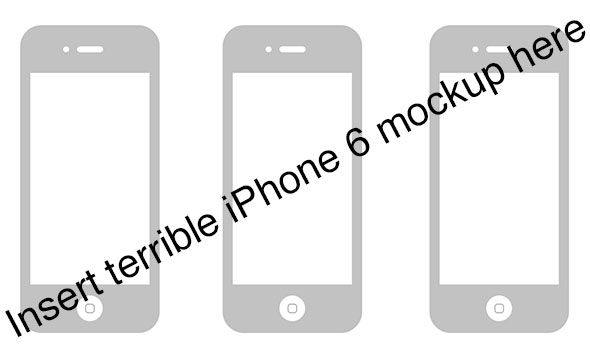I've spent around a week playing with Apple's preview version of iOS 7 in its current beta form and in that time I've had plenty of time to peruse Apple's vision for the future of iOS. It goes without saying that passing judgement at this stage would be a very silly thing to do - after all, the OS is still half-baked and there are months of development to go.
Why, then, did so many people form negative opinions of the refresh, Jony Ive's homework and Apple's current state of affairs within hours of the company's WWDC 2013 announcement? Is it because Apple are an "all or nothing" company, worshipped by rich kids and hated by idiots?
Regardless, you can stop whining now. iOS 7 is going to be just fine.
It's Great To Use
You might have only seen a few images, perhaps Apple's rather short 7-minute introduction video that's chock-full of the usual flowery fluff we expect from product reveals. Even the developer copy is sorely in need of work, but then that's to be expected from beta software.
The take-away here is that it's not finished yet but when it is, oh my, are you going to love it. User interfaces aren't just about aesthetics, but also about interactions and responsiveness. Simply seeing a video of how something is supposed to work does not do it justice, and as with Apple's usual design - the marriage of input and response is wonderful.
Springboard animations are one of the many examples I could call upon, and make for an example you can see for yourself in Apple's marketing materials. Tap an app, and you will "zoom" into it as it launches. Press the home button to exit an app and this animation repeats in reverse, zooming out of the corresponding springboard area for that app. These animations feel like more than gimmickry, instead providing a degree of feedback that matches the UI. Interactions like this make iOS 7 feel like a layered interface which you "dip into" with each app, panel or system function you trigger.
Passing judgement before trying something out (even seeing someone use something) is a mug's game. Even the most reluctant Apple sympathisers can admit credit where credit's due, and take my word for it: there's a lot of credit due here.
It's Visually Stunning
Get rid of your faux-leather couch, rip up the wood-effect lino and let iOS 7 guide you to a skeumorph-free existence with its sexy new translucent layers. I'll admit that the translucency doesn't look like much to shout about in screenshots, but after spending some time with the layered approach I've been well and truly converted.
Unlike the Windows Phone interface, iOS does not use solid blocks of colour. This gives it quite a different feel to Microsoft's OS, with iOS 7 having very "light and airy" feel with an almost visible sense of "depth" that is missing (by design, they are different after all) from Microsoft's modern UI.
The interface wouldn't have been any less usable with solid blocks of colour everywhere, after all, translucency is quite a way off transparency. Colours are instead blurred into fuzzy, frosted-glass-like backgrounds and the illusion of a layered interface is given a final push with the inclusion of the parallax effect. The translucency adds nothing in the way usability but merely serves to make the time you spend navigating the device more pleasant. A lot more pleasant.
It Looks Great on the Hardware
No, I'm not referring to performance or screen resolution but the long-awaited marriage of hardware and software aesthetics. Mac computers have traditionally "just worked" thanks to carefully controlled hardware and iOS itself was designed to device specifications. At last it finally looks like the department that designed the physical metal and glass iPhone were wearing the same hats as the team that did the software.
That "frosted" back piece on your iPhone 5 makes sense now! The understated colour schemes of black and white (let's forget the entire iPod Touch range for a moment) contrasting beautifully with the playful colour scheme, bold icons and a radical departure from faux-textures and drop-shadows. iDevice software and hardware visuals are finally joined in elegant uniformity, and it only took the entire life span of the iPhone to make it happen.
iOS 7: Catch Up Edition
iOS 7 sees Apple playing the biggest game of catch up in the iPhone's history. This is evident in new features like Control Centre, which some say was ripped straight from the Cydia store. Auto-updating iPhone apps is another new addition, a feature that Android has had for ages already. And what about that new multi-tasking interface that uses cards and gestures, as previously seen in the ill-fated WebOS. But really - who cares, at least they're finally listening right?
What's more foolish - chastising a company for trying to please its customers using some less-than-original ideas or a company not listening to its customers and refusing to implement long-overdue features and tweaks? It's not like iPhone owners haven't had to wait for features before - the original model famously lacked multimedia messaging, something phones had enjoyed for years prior.
With iOS 7, Apple's mobile platform is finally where it needs to be after a year's lull. The tired old interface has gone, and with it so too have many of Apple's interface design principles.
It's Only A Baby
With the revealing of Apple's plans and pre-release edition of iOS 7, it might seem like the Cuptertino design guide has been rewritten. This isn't strictly true, because the book is still not quite finished. There are still around three months left till the expected release date (iOS 6 was released on September 19, 2012 for context) and things can still change.
Jonathan Ive was only appointed head of human interfaces Apple-wide at the very end of October. That means he's likely only had seven whole months to put his plans for iOS 7 into action. If ever there was a reason why this year's iOS beta might be a little more unstable than the last, this is it.
Don't think for a second that the new look is "done" as Apple are rumoured to be refining further before the final release, and will surely evolve their new translucent principles even further over the next few product cycles. With the iOS interface "fixed" for now maybe Apple will pull out all the stops out when it comes to new features in iOS 8.
We've Not Seen Hardware Yet
Finally, we've still not seen any hardware. If last year's product cycle is anything to go by, Apple will be releasing a new iPhone to co-incide with the new OS in a few months. They might even go the whole hog and release a new iPad - as ever, we know little of Cupertino's plans. This is the final part of Apple's plan for iOS 7, and the company is bound to be keeping something exciting under wraps for this year's later announcement. But what could it be?
So what do you think of iOS 7? Have you used it yet? Are you looking forward to getting your hands on the final copy? What new hardware will Apple announce? You're probably dying to add your opinion, so do so below this post!









